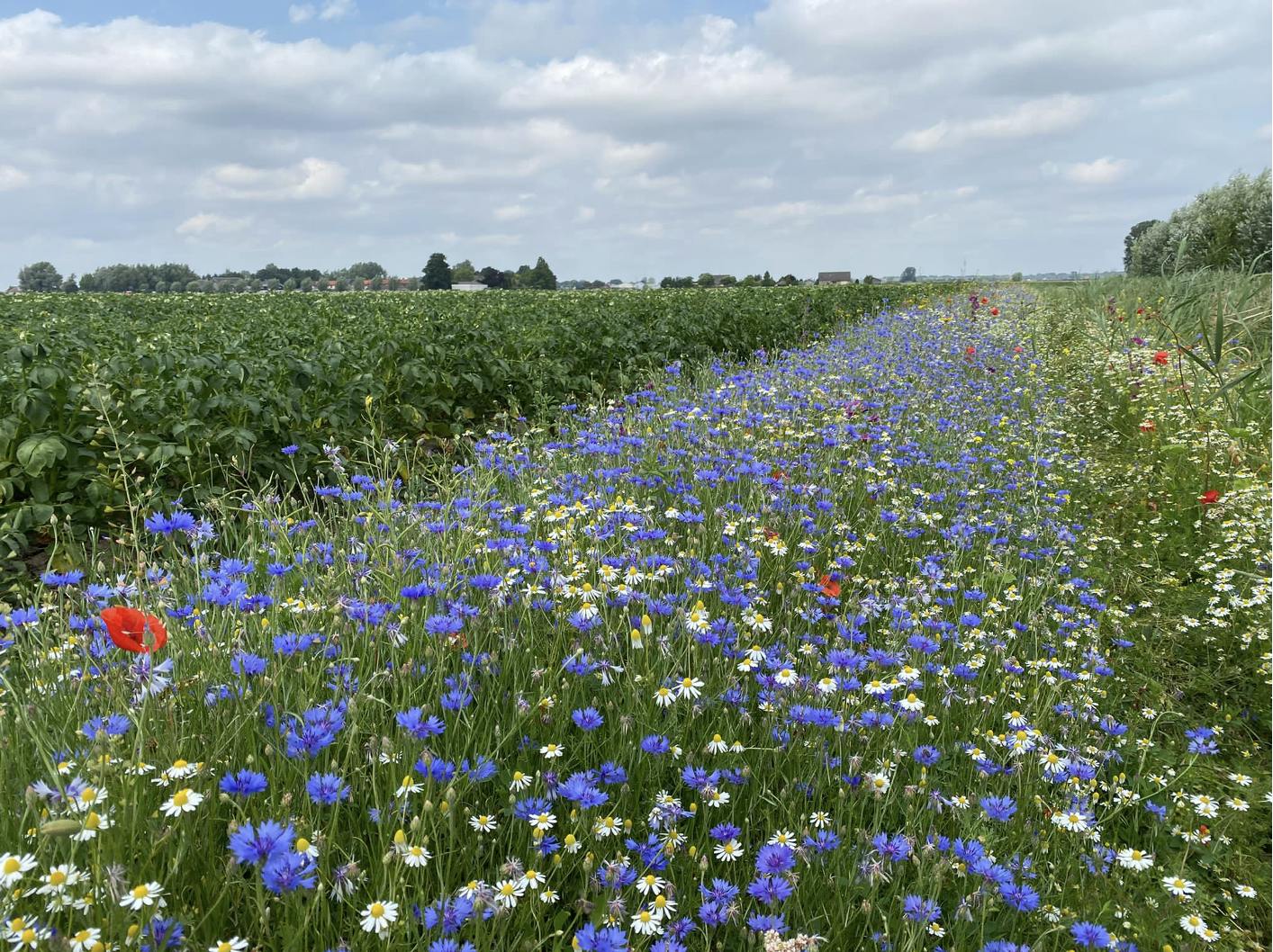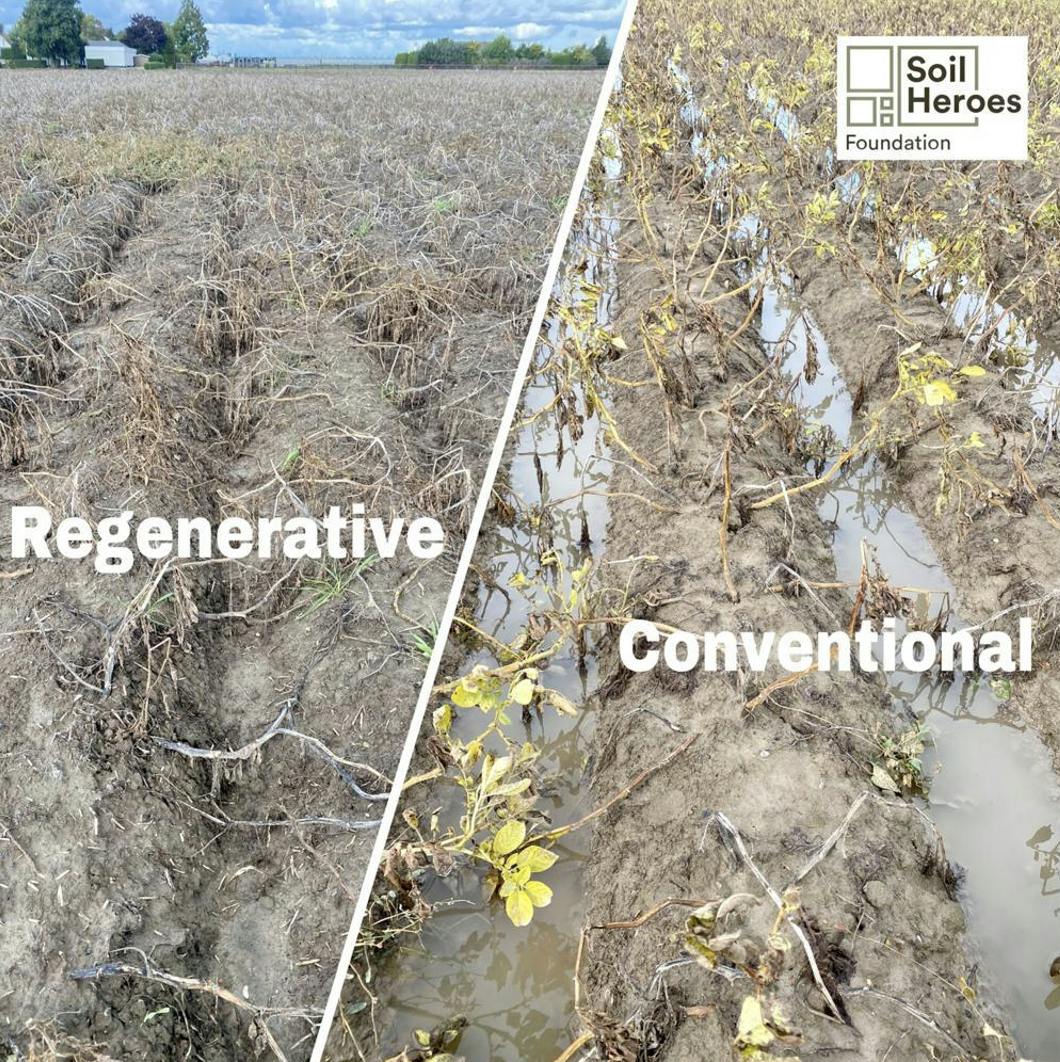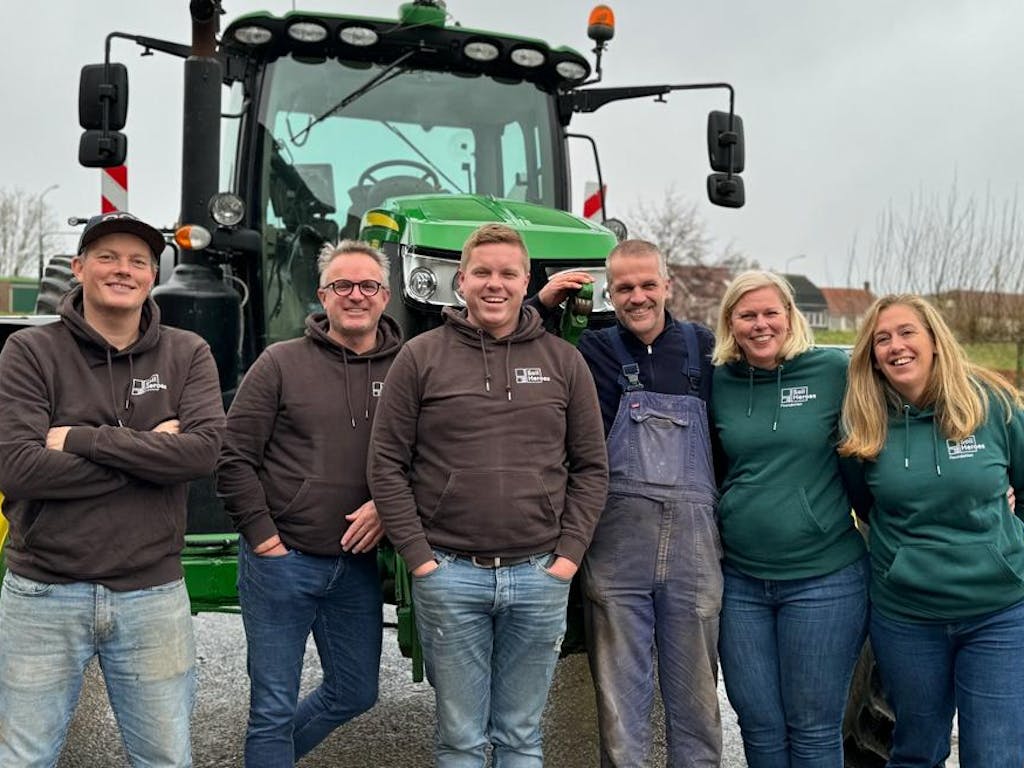Introduction
By conducting trials on farms, primarily the Klompe Farm in the Netherlands, where they experiment with techniques such as minimal tillage, biofertilizers, and biodiversity strips, the organisation demonstrates the economic and ecological benefits of regenerative agriculture. Soil Heroes Foundation aims to provide proof that these methods can improve soil health, increase biodiversity, reduce erosion, and sequester carbon, all while maintaining farm profitability. With over a decade of experience in sustainable agriculture, Annabelle is a passionate advocate for transforming farming systems into models that prioritise climate and environmental sustainability while supporting farmers' livelihoods. We asked her about her views on regenerative agriculture.
Sophia: Could you explain the concept of regenerative agriculture in your own words?
Annabelle: At Soil Heroes Foundation, we view regenerative agriculture as a holistic approach to farming, a way of working with nature. It’s about layering a variety of practices that interact with one another, creating a system of farming that regenerates itself over time. For instance, going no-till alone won’t improve soil health; it’s also essential to adopt practices that enhance soil biology, boost pest resistance, reduce fertiliser dependence, and build overall resilience.
It’s also essential to adopt practices that enhance soil biology, boost pest resistance, reduce fertiliser dependence, and build overall resilience.
Sophia: What inspired the Soil Heroes Foundation to focus on regenerative agriculture, and what role does it play today?
The inspiration for our work comes from the Klompe Farm, near Rotterdam, in the Netherlands. When the founder, Jeroen Klompe, inherited the farm from his father, he initially continued traditional, input-intensive practices, but serious soil compaction soon became an issue, which was not surprising given the farm’s foundation on dense sea clay soil.[1]
They saw a worrying decline in yields and realised that adding more inputs wasn’t the answer. This led them to explore other options, and they chose to follow a regenerative path trying the no-till farming technique[2], experimenting with multi-species cover crops[3], and learning how biodiversity can strengthen the farming system. They began implementing such practices with the objective of reducing soil compaction issues and quickly observed additional benefits. They noted improvements not only in the physical properties of the soil but also in its chemical and biological aspects. This realisation motivated them to fully embrace regenerative agriculture.
They began implementing such practices with the objective of reducing soil compaction issues and quickly observed additional benefits.
As they transitioned larger sections of their farm, they initially questioned their decision: Why are we doing this? They were not seeing significant changes and were concerned about their expenditures. It wasn’t until around the third to fourth year of regenerative agriculture that they began to see noticeable improvements that made a real positive impact on their farm - both in terms of yields, but also cost reduction and resilience to weather events - these continued to improve year on year thereafter. The state of the soils at the start of their transition was affecting their business, and they were lucky that they could manage financial the risk of transition. But many farmers are struggling with narrow profit margins and high levels of debt and are often unable to take on additional risks.
Seeing these results inspired Jeroen and Mellany Klompe to co-found the Soil Heroes Foundation. By conducting on-farm trials, we assess the effectiveness of various regenerative strategies from a farmer’s perspective. This is complemented by rigorous academic research, providing hard data to illustrate the differences observed. Currently, we are working with the Klompe Farm to trial regenerative agriculture on a large-scale commercial farm. This is of particular interest because the farm has transitioned 200 hectares to regenerative agriculture while still managing another 150 hectares conventionally. This setup allows us to compare regenerative and conventional methods directly, enabling clear visual and quantitative observations.
By conducting on-farm trials, we assess the effectiveness of various regenerative strategies from a farmer’s perspective.
Sophia: As you said, transitioning to regenerative agriculture is a journey, it takes a lot of time, and you need investments. Do you believe regenerative farming has the potential to go mainstream, or is it more of a niche practice?
Annabelle: I believe regenerative agriculture not only can go mainstream, but it has to. With climate change accelerating, the agricultural system must become more resilient. We’ve seen firsthand how regenerative practices perform under extreme weather conditions. For instance, in recent years, Klompe Farm has faced both severe droughts and excessive rainfall. On the conventional fields, we had to irrigate far more frequently, while the regenerative plots required minimal irrigation. After heavy rains, the conventional potato fields saw water pooling in the furrows, which can lead to crop rot within a day, whereas water simply drained through on the regenerative plots. Yield analysis showed regenerative plots had slightly higher yields, but the critical factor was uniformity. In markets like potatoes, size determines payment (for example only potatoes meeting specific size criteria are accepted by a hypothetic buyer), and uniformity means higher earnings.
I believe regenerative agriculture not only can go mainstream, but it has to. With climate change accelerating, the agricultural system must become more resilient.
Scaling regenerative farming is feasible but demands a different approach. At Soil Heroes Foundation, our focus is on large-scale arable farms. This shift is already being tested on Klompe Farm’s 200 hectares which serve as promising examples of regenerative practices at scale.
Transitioning to regenerative systems, however, requires a new mindset from the entire agrifood value chain, including farmers, and specific investments, especially since arable farming relies on heavy machinery and reduced workforce. For instance, Klompe Farm modified its tractors to support row cropping, and needed to increase its workforce to accommodate certain practices. Although regenerative agriculture reduces synthetic input costs, labour needs tend to rise, especially for practices like producing biofertilisers. There’s a clear shift in costs from synthetic inputs to labour.
Another significant barrier remains the initial risk. Regenerative practices often require a ‘trial and error’ approach to find a system that suits the soil type and crop needs, and early-stage investments don’t yield immediate returns. Farmers may face increased costs or temporary dips in output as they wait for the benefits to materialise. These are generally short-term costs, but the risk is high enough to deter many farmers from taking on loans without guaranteed returns. Bridging finance could be the key, helping farmers cover this transition period.
Scaling regenerative farming is feasible but demands a different approach. (...) There’s a clear shift in costs from synthetic inputs to labour.

Andrea: Beyond economic support, what do farmers need to manage such a transition to regenerative agriculture?
Annabelle: Knowledge is indeed crucial, but there's an overwhelming amount of information, much of it conflicting, that leaves many farmers uncertain about where to begin. While many farmers are interested in regenerative agriculture, they need someone who can visit their farm and provide specific, practical advice on how regenerative practices would apply to their unique setting.
Those who can afford consultancy services typically engage agronomists trained in conventional practices, but it’s difficult to find advisors well-versed in regenerative methods. Unfortunately, most agricultural training institutions and universities still focus heavily on synthetic inputs and conventional methods, with limited attention to alternative approaches. The latest generation of agronomists is still predominantly trained in conventional farming, creating a cycle that’s hard to break, as these are the same individuals who will advise farmers transitioning to more sustainable practices. For me, reforming both the education system and farm consultancies must be a priority to genuinely support farmers in adopting regenerative practices across Europe.
The latest generation of agronomists is still predominantly trained in conventional farming, creating a cycle that’s hard to break, as these are the same individuals who will advise farmers transitioning to more sustainable practices.
Lastly, there are also farmers who have tried regenerative agriculture and decided it’s not for them. This raises the question: Why aren’t they staying, and what’s missing? The answer may lie in a lack of understanding of the comprehensive, system-wide changes that regenerative agriculture entails. Many farmers enter the process expecting incremental changes, thinking they can adopt a bit of precision agriculture here and a tweak there. However, regenerative agriculture requires a full, holistic shift in the farming system. Without the right guidance to help them understand this broader approach, many find it difficult to stay committed.
Regenerative agriculture requires a full, holistic shift in the farming system.

Andrea: Considering the significant EU budget allocated to the Common Agricultural Policy (CAP), do you think regulatory changes are needed to better support the transition to regenerative agriculture? How could EU policies shift to incentivise this necessary change more effectively?
Farmers often voice their frustration with the ever-changing regulations from Brussels, which can feel overwhelming and disconnected from their realities. Many believe that current policies favour conventional farming, making it the easier and more profitable choice. Imagine if we could flip the script: what if policies were designed to reward regenerative practices, making them not just viable but the preferred route for farmers? Gradually shifting the landscape to make regenerative farming the norm could transform our agricultural system without causing major disruptions.
Imagine if we could flip the script: what if policies were designed to reward regenerative practices, making them not just viable but the preferred route for farmers? Gradually shifting the landscape to make regenerative farming the norm could transform our agricultural system without causing major disruptions.
The countless hours spent in Brussels on workshops and discussions rarely translate into broad policy changes. Policy undeniably plays a crucial role in shaping agriculture. The CAP transformed farming post-World War II and has the potential to drive another shift if the commitment is there. Many discussions revolve around consumer choice leading change, yet price remains a major barrier. Consumers may express a preference for sustainable products, but without affordability, demand remains limited, this is where private investment might be key. Investors are increasingly looking to channel resources into sustainable agriculture, which could ultimately be a game-changer in transforming the system.
Many discussions revolve around consumer choice leading change, yet price remains a major barrier. Consumers may express a preference for sustainable products, but without affordability, demand remains limited, this is where private investment might be key.
Thank you for the interview!
[1] Clay soil poses challenges for farming due to poor drainage, compaction, limited aeration, and difficulty in tillage. While it holds nutrients well, they’re often not easily accessible to plants.
[2] No-till farming is a technique where crops are grown without disturbing the soil through tillage. This method reduces soil erosion, particularly in sandy, dry, or sloping areas. “What is No-Till Farming?”. Regeneration International. 24 June 2018.
[3] Cover cropping refers to the technique of sowing a crop in between periods of regular cash crop production with the main purpose of creating a living groundcover to protect the soil surface, control weeds and improve soil conditions. Planting a diverse mix of species as cover crops boosts farm biodiversity and provides resilience against weather extremes, as different species thrive under varying conditions. Chapagain, T.; Lee, E.A.; Raizada, M.N. “The Potential of Multi-Species Mixtures to Diversify Cover Crop Benefits”. Sustainability 2020, 12, 2058





